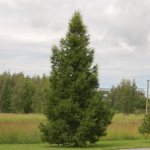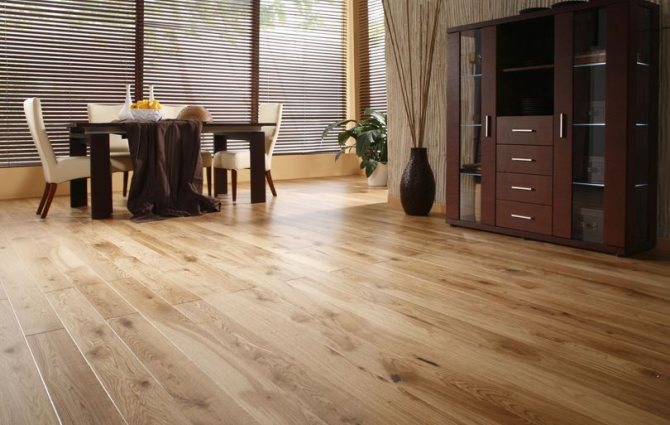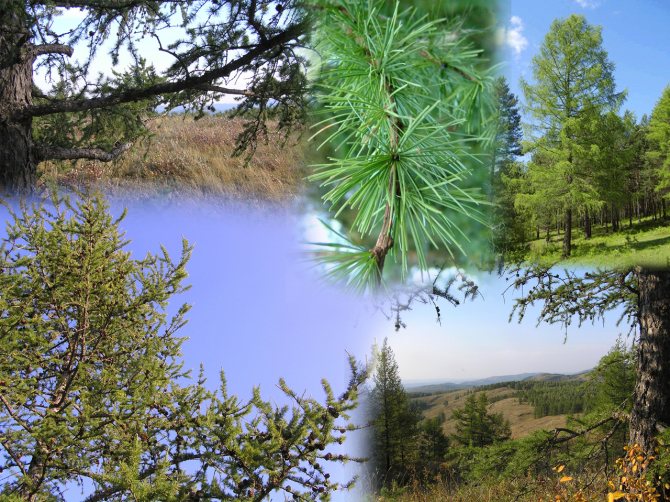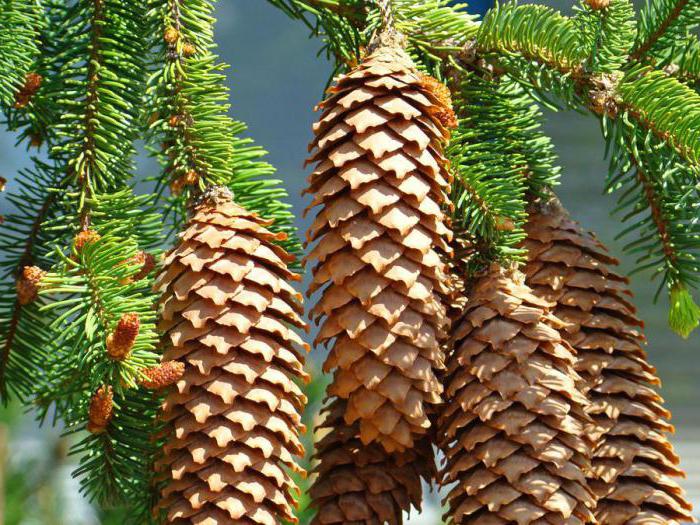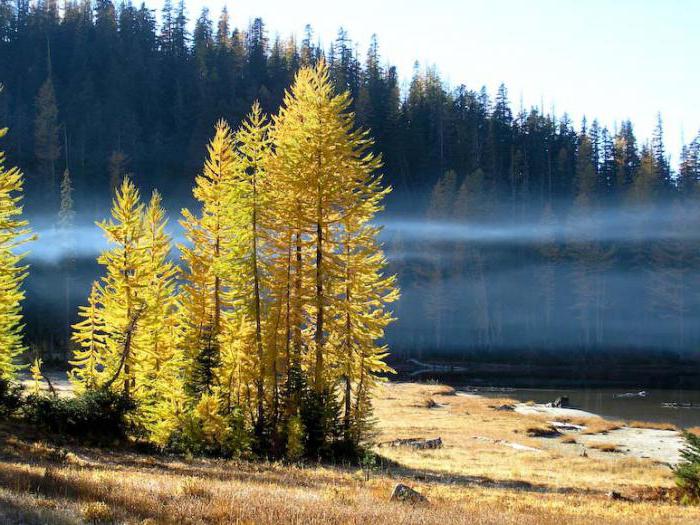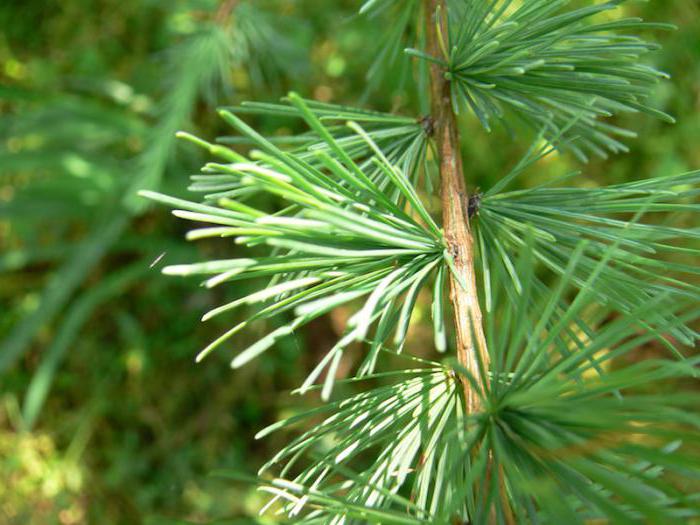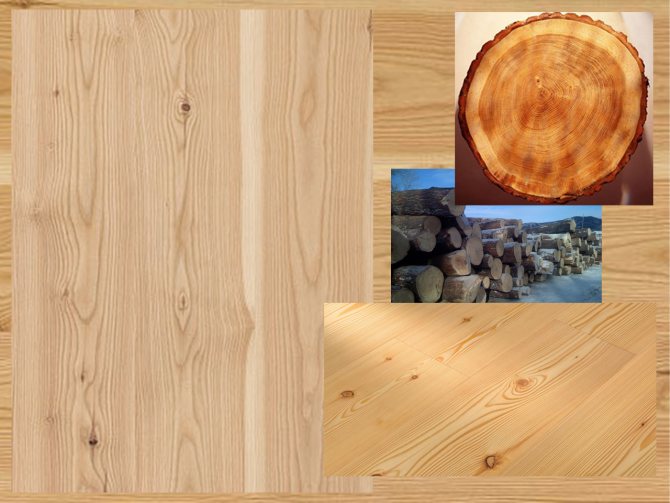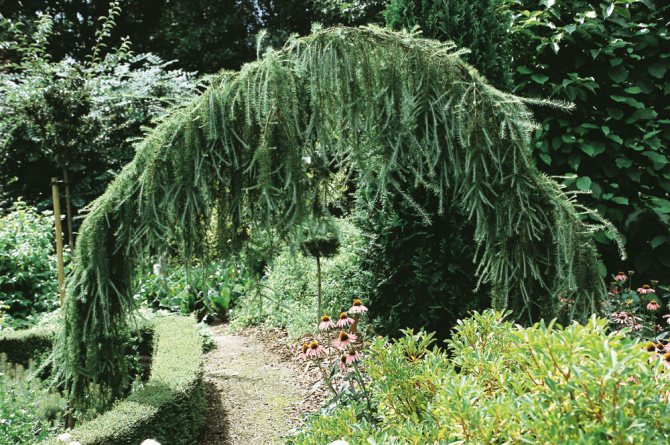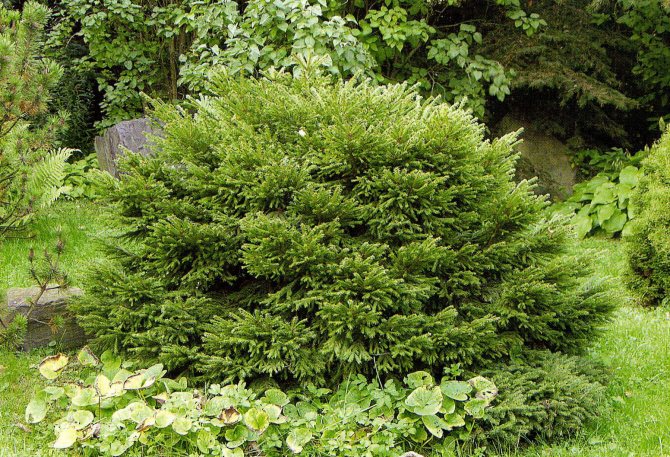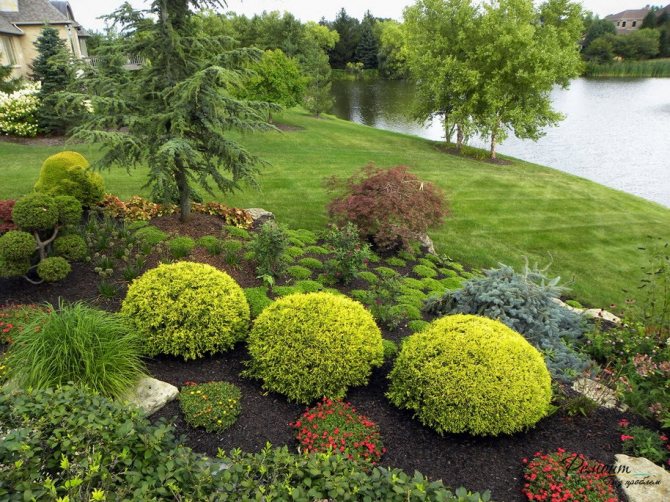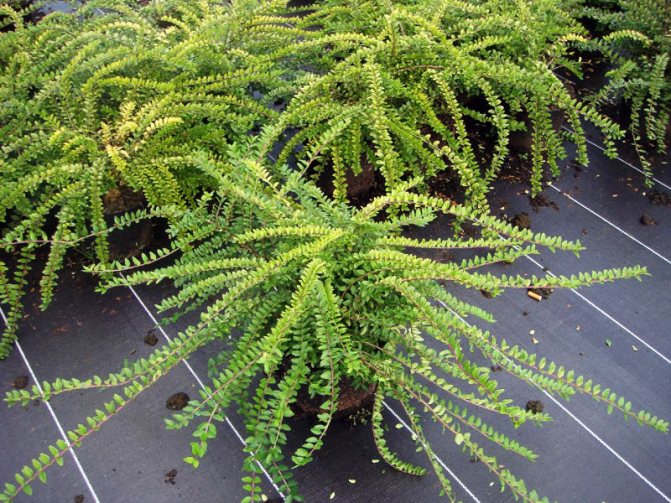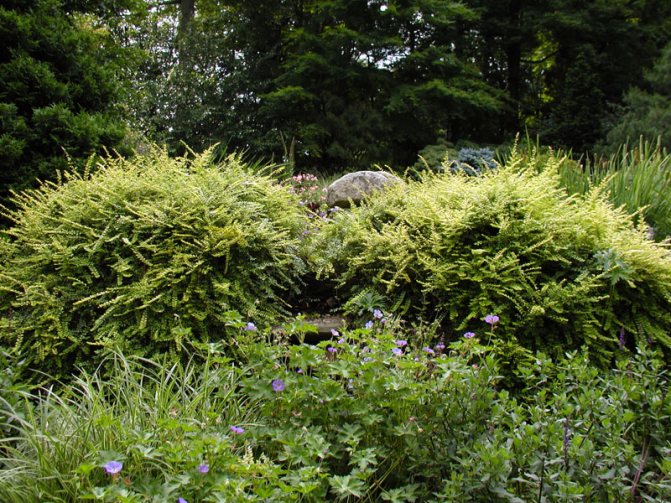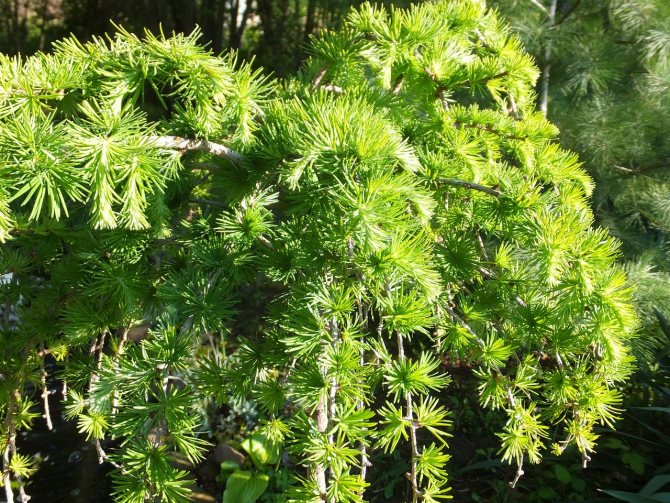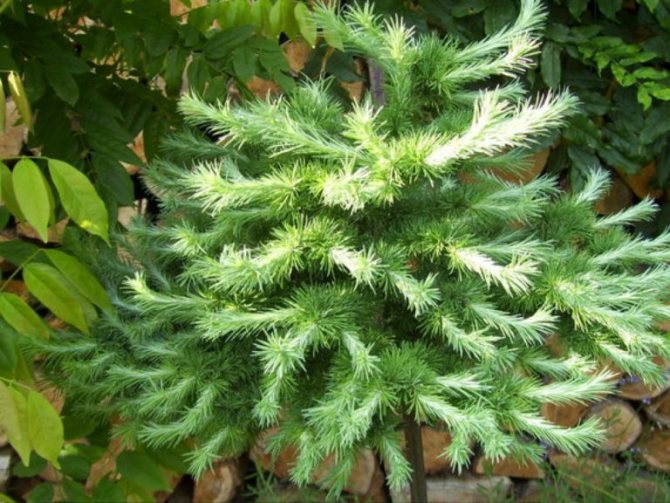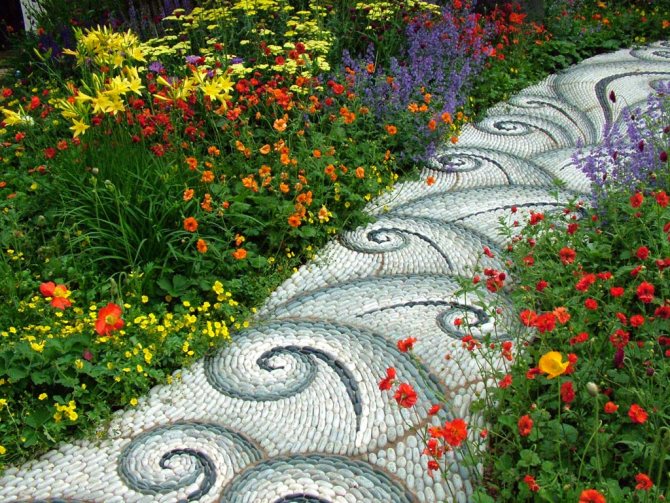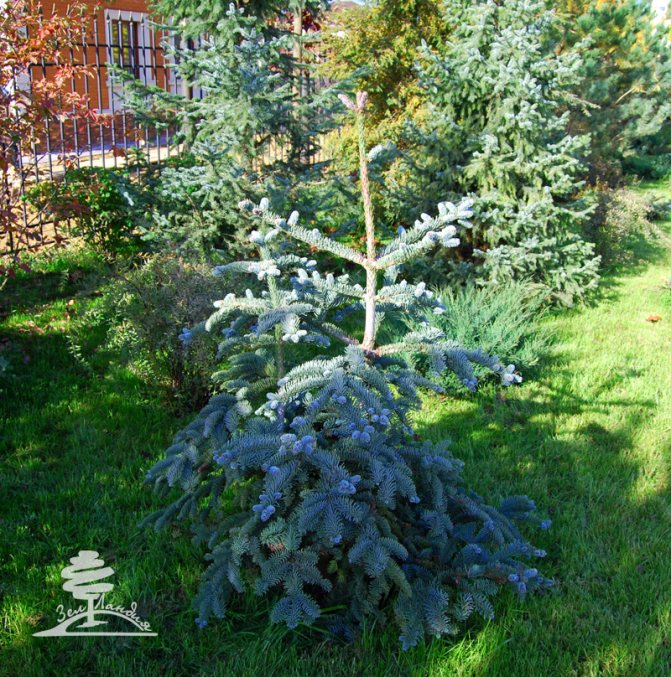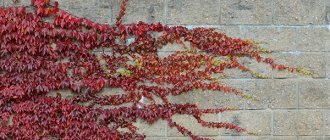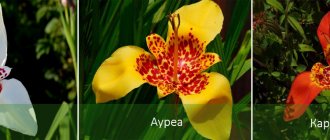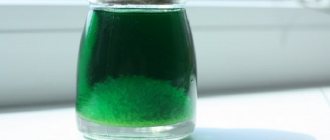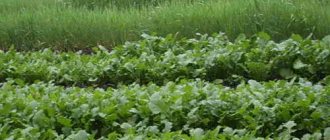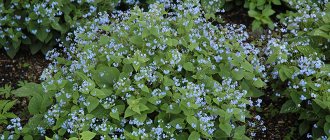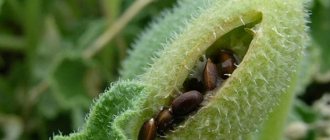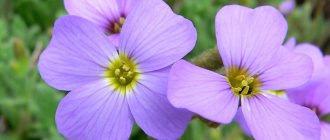The beautiful larch (Larix) is one of the representatives of conifers of the Pine family. The scientific name has Latin roots, in translation meaning "abundant, very resinous." The culture is durable, some representatives of the genus lived up to 500-600 years.
The uniqueness of the species belonging to this genus lies in the dropping of needles at the end of autumn and the ease of growing varietal forms. Larch care does not take much time, and the varieties are highly decorative, therefore the coniferous beauty is very popular with gardeners.
Due to the color change of the needles at the end of the season, the plant can compete with many deciduous trees and shrubs.
Description of Siberian larch
Larch of this species is a unique tree species in many ways. It is so unpretentious that it can grow in almost any conditions: from swampy lowlands to mountain slopes with rocky soil. Its thick bark is able to completely protect the tree from scorching fire, and the wood so successfully resists moisture that it is used to make ships and building materials that can be stored in a humid environment for many hundreds of years. But even the most detailed description of Siberian larch will not be as clear as with the proposed photo. It is especially important to understand how tender and unlike mature trees very young seedlings can be.
What does Siberian larch look like?
Siberian larch is a majestic tree, which at a young age has a pyramidal crown with a diameter reaching 10-15 m. Over the years, the crown becomes more rounded.
The bark of young trees is smooth and has an attractive light yellow tint. With age, grooves and cracks appear on it, it darkens and reaches 25 cm in thickness. The bark reliably protects larch trees from the most severe frosts, and also successfully resists forest fires. The wood has a reddish-brown hue with a light beige sapwood that is small in thickness. In terms of strength, it is second only to oak and is very resistant to moisture and any decay processes.
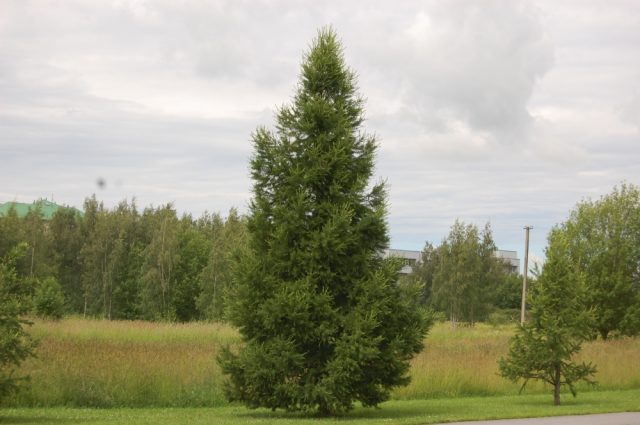
Among other characteristics of Siberian larch, a pleasant slightly citrus aroma can be noted, which comes from very young, just opened needles. The needles themselves are medium in length (up to 4-5 cm), rather soft to the touch. In the spring-summer period, the needles are characterized by a light green tint, with a slight bluish bloom, and in autumn they turn yellow, which gives larch trees a special charm.
Attention! Among the features of Siberian larch, one can notice the sparseness of the crown, therefore, in the shade of these trees there is a lot of light and a variety of plants can grow.
Larch branches often grow to the sides at an angle of almost 90 °, then making a gentle upward bend. Young annual shoots are yellow-green in color, rather long with a spiral arrangement of needles. Perennial shoots on larch trees are much shorter, have a grayish tint, and needles grow on them in bundles of 30-50 pieces. Each shoot lives for about 10-12 years.
Buds on trees have a wide conical shape, resinous structure and are covered with scales. The color is brown with a yellowish or reddish tint.
Where does Siberian larch grow
In Russia, larch is the most widespread tree. Occupies up to 40% of the area of the entire forest zone in our country. The distribution area of Siberian larch practically coincides with the Russian borders, only in the south it slightly extends into the territory of Kazakhstan, China, Mongolia.
It forms the most extensive clean and mixed forests throughout Siberia and the Far East, and also enters the Altai and Tien Shan mountains up to an altitude of 2500 m.
This species is also found on the European territory of Russia, mainly in its northeastern part. Larch loves to grow in a company with pines, spruces, firs, cedars.
Sizes of Siberian larch
In height, many Siberian larch trees reach from 20 to 40 m.But especially impressive is the trunk, which can increase in width from the top to the ground and be from 100 to 180 cm at the very base of the tree.
Siberian larch root system
The root system of this larch is well developed. The main rod is usually pivotal and goes deep into the ground. In addition, larch is capable of developing many adventitious roots. Together, they make trees able to withstand any winds.
When Siberian larch blooms
Flowering in larch, depending on the area of growth, occurs from April to May and lasts about 1.5 weeks. New needles appear at about the same time. Blooming Siberian larch is not so much spectacular as interesting. Male flowers look like almost invisible yellowish spikelets. They are located most often on annual young shoots. But female bumps grow vertically upward and have an attractive reddish-pinkish tint.
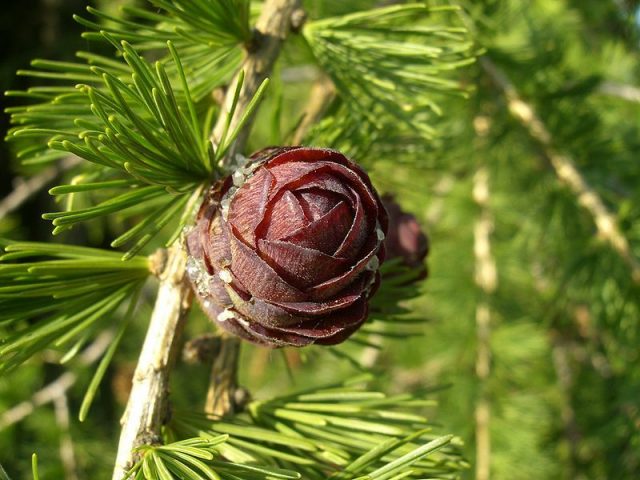

They are evenly distributed over the crown of the tree. During flowering, even small gusts of wind raise light clouds of pollen from male cones above the trees. They get on female bumps, and self-pollination occurs.
Seeds on trees ripen in one season closer to autumn. But they are not formed annually, but with an interval of about once every 2-3 years.
Important! In larches growing in harsh northern conditions, seeds are formed even less often - after 6-7 years. Mature cones become brown, and in the same autumn, small seeds with wings leave the tree. And old empty cones can continue to be in the trees for several more years.
Larch of this species blooms and forms seeds at the age of 15-20 years. And if it grows in cramped or unfavorable conditions, then even later, after 30-40 years.
How long does Siberian larch live
Siberian larch lives on average about 500-700 years, although under favorable conditions its life expectancy can be up to 1000 years. It is a fast growing tree. Already in the first few years of life, it can grow up to 100 cm, in the subsequent annual growth can be up to 50 cm. But after 40 years, the growth rate of the tree slows down. It, as a rule, reaches its present size and begins to grow more in breadth.
Formation of the crown of common larch
Many styles are possible in the formation of common larch. Tekkan, tatikas, rock plantations look advantageous. The shape of the tree is maintained by pinching young shoots. Pruning of old branches is carried out in winter. Wire the branches from February to April. It is not recommended to keep the wire for more than a year. Larch is very good for beginners. When working with it, you can easily choose the desired style and shape - it gives so many shoots that during the growing season you can wait for the shoot in the right place and in the right direction. More than 90% of new shoots have to be removed. Despite the very strong and hard wood, the branches and trunk retain amazing flexibility even at the age of 10 years.There is no need to be afraid that if the direction or shape changes radically, the branch will break.
When forming the crown of a larch, you can limit the growth of the tree and give it a weeping or other shape, since the plant is very plastic. This is achieved by cutting and pinching. Gradually cutting off the branches on the lower part of the trunk, let the larch grow to the desired size. Then you begin to gradually bend all the growing branches above, loosely tying them to the trunk. When a sufficient weeping crown is formed, cut off the upper part of the trunk. In the future, either cut out the branches that are trying to grow in the upper part, or you also tie them to the trunk. When the branches are completely lignified, the harness can be removed. Larch shears well, and therefore you can do whatever you want with it. Imagine it can even be planted horizontally! By the way, there are dwarf varieties of larch.
Next, you can familiarize yourself with the photos and names of larches grown on the site and at home.
Siberian larch in landscape design
Unlike other species, this larch is hardly suitable for small areas. It grows very quickly and reaches an impressive size in adulthood.
But from it you can create compositions in the form of a hedge in combination with other conifers in large gardens and parks.
A Siberian guest will also look good as a single solitary tree, around which you can break a flower bed of relatively light-loving flowers and shrubs, since the tree's crown is quite transparent.
Distinctive features
The boards differ in size, quality (there are several varieties) and method of application. The dimensions of larch lumber are regulated by GOST 24454-80 standards. Thickness ranges from 16 to 100 millimeters, widths from 75 to 275 millimeters. Usually the length is from one to six and a half meters with a graduation of 0.25 m.
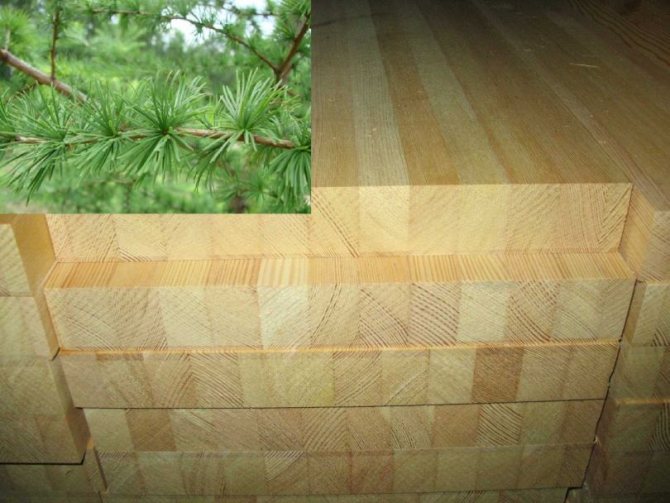

The following categories are distinguished: Extra (Premium), A, B and C. Here, the Premium grade is the best and most expensive, and the C grade is a poorly conditioned material, suitable only if there is a top coat.


The board can be either ordinary or euro. Euro products are equipped with convenient ventilation slots located on the back of the board. This allows you to evenly distribute the load, provide ventilation and leave no chance for mold formation.


Useful properties of Siberian larch
Larch is able to significantly improve both the air in which it grows, due to the released phytoncides, and the soil, forming colonies of fungi that decompose organic matter. In addition, almost all parts of the tree have healing properties: from cones with seeds to bark.
The medicinal properties of Siberian larch resin
The gum (or resin) of Siberian larch has long been famous for its healing properties. Collect it during the active growing season of the tree, making notches on the trunk. Up to 16% of essential oil and rosin are obtained from the resin.
Attention! The essential oil has a rich composition and helps to normalize the functioning of the digestive tract and central nervous system, reduces fermentation in the intestine, enhances bile secretion and eliminates inflammatory processes.
In addition to resin as such, in folk medicine, decoctions from young twigs and extracts from wood of this type of larch are used. They are effective against any viruses, including well to eliminate all flu symptoms. They have anti-edematous effects, restore capillary resistance, and have a beneficial effect on liver function.
In general, larch resin can work wonders in healing:
- gingivitis and tonsillitis;
- inflammation and open wounds;
- poisoning and problems with the gastrointestinal tract;
- rheumatism, gout and other neuralgic diseases;
- diseases associated with the respiratory system.
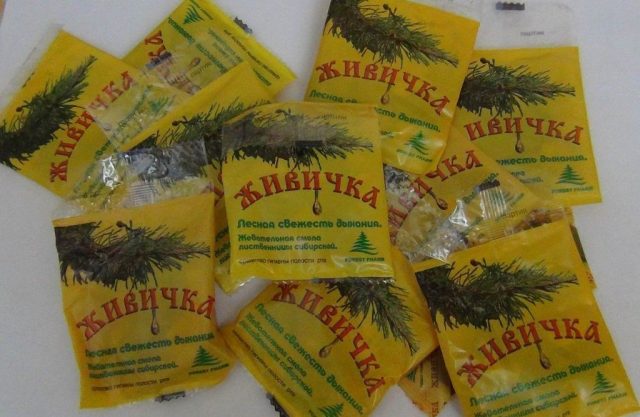

Recently, you can find on sale chewing sulfur made from the resin of Siberian larch. This natural product, having all the properties of ordinary chewing gum, also has an antiseptic and antitoxic effect on the oral cavity and the entire body. It is useful to chew for the prevention of oral diseases, it can relieve toothache and even reduce the urge to smoke.
With the undoubted benefits of using gum from Siberian larch resin, it can be harmful only in rare cases of an allergic reaction to the aroma of conifers.
The benefits of Siberian larch cones
Cones are often used to obtain medicinal honey. In this case, they are harvested still very green (young) somewhere in late April or May. Honey provides an effective help for any exhaustion: physical or mental, in the treatment of asthma and gastrointestinal diseases.


In addition, for a variety of medicinal purposes, seeds are used that are formed after the flowering of Siberian larch, they are harvested in the fall from mature cones. They contain up to 18% fatty drying oil.
Medicinal properties of Siberian larch needles
Larch needles have always been famous for their high content of ascorbic acid, therefore they were widely used as an antiscorbutic agent. It also contains essential oils.
It can be harvested from trees throughout the summer, but the most favorable period is considered to be the period from late June to early August. It is at this time that the needles accumulate the maximum amount of biologically active substances.
Decoctions and infusions of larch needles can provide real help with vitamin deficiency and hypertension. It is an excellent expectorant, antihelminthic and wound healing agent. In combination with young kidneys, a decoction of pine needles in milk helps with flatulence, kidney stones and chronic bronchitis. Fresh raw materials have the best effect, and when harvesting needles, drying is carried out at a temperature not higher than + 25 ° C.
The benefits of Siberian larch bark
The bark of this species of larch is also distinguished by a rich composition:
- from 8 to 10% tannins;
- gum;
- flavonols;
- catechins;
- organic acids;
- anthocyanins;
- glycoside coniferin.
It is harvested using felled trees, and thoroughly steamed or boiled before drying to destroy small parasites that may inhabit it. After thorough drying, the larch bark is stored in the refrigerator. Under such conditions, the bark has a rather long shelf life - up to several years.
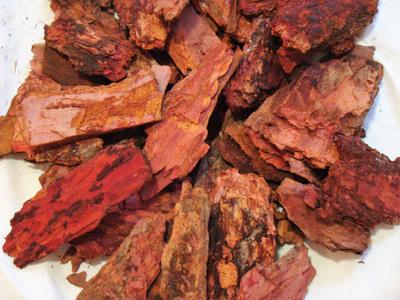

Larch bark decoction is used for:
- kidney disease;
- diseases of the heart and circulatory system;
- painful and too heavy menstruation;
- intestinal infections;
- radiculitis;
- headaches and toothaches.
The healing properties of larch sponge
It is the Siberian larch trees that are often chosen by the medicinal tinder fungus as its permanent habitat. The fruit body of this mushroom has enjoyed well-deserved popularity since ancient times. It is harvested during the entire growing season, from spring to autumn, and dried at not too high temperatures.
It is used as a sedative, hemostatic and sweat-removing agent for tuberculosis and other lung diseases. Also used for neurasthenia, diabetes and Graves' disease.
The most famous varieties
Siberian. The tree of this species is distinguished by large skeletal branches. Its average height is 4.5 m. Siberian larch cones look like roses.
Japanese. The scales of this species are thin, in itself it shows resistance to cold weather. Japanese larch looks great in small gardens. Its bark has a characteristic reddish tint. The branches of the plant are rather large and long, slightly concave. The crown is usually pyramidal. The needles of the Japanese larch are bluish, the cones are round.


European.A woody plant of this species is found in the mountains of Europe. It develops poorly in swampy soils, prefers light, loose, nutritious soil.
Western. It can be seen in the forests of Canada. Western larch does not make high demands on growing conditions. She feels good in the shade, tolerates drought well. The maximum height is 75 m, the average height is about 50 m.
American. This species is found in the USA and Canada, prefers mountain peaks. The tree can also be found in deciduous forests. His crown is large, beautiful. The growing season lasts a long time. American larch is mainly cultivated in the USA.


Gmelin larch. This is a northern tree that grows in Siberia and the Far East. Under natural conditions, gmelin larch reaches a height of 25 m.
Griffith. The homeland of this species is the tropics. He makes high demands on the composition of the soil: he loves light, fertile, drained.
The use of Siberian larch
In addition to being used in medicine, larch is widely used in other economic sectors.
- A persistent red-brown dye is obtained from the bark of the tree.
- Wood has increased strength and special resistance to weathering, especially moisture. Therefore, piles, poles and sleepers, as well as wooden sea vessels, are made from it.
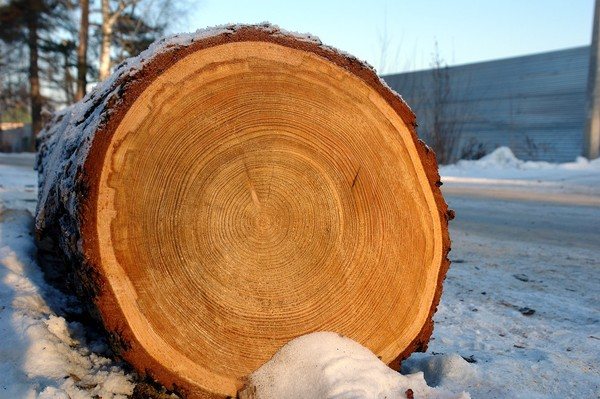

- Due to the release of medicinal phytoncides, larch wood is used for the construction of baths and the creation of various bath utensils.
- The resin is used as rosin in the paint and varnish industry.
Views


Now we know the answer to the question, is larch a deciduous or coniferous tree. Who knows that this is one of the most widespread breeds on the planet? More than twenty of its species are known: Daurian, Amur, Kamchatka, European, seaside, Siberian, Okhotsk, Kuril, Olginskaya, Chekanovsky, Gmelin, Middendorf, Komarov, Griffitz, Lyubarsky, Potanin, Layel larch, American larch, thin and some others. They differ in places of growth, the length and width of the shoots, the shape and size of the cones, the appearance of the needles. But they all belong to the Pine family, and no one doubts whether larch is a coniferous or deciduous tree. The features are the same for all species - soft needles that fall off for the winter.
Planting and caring for Siberian larch (Larixsibirica)
Larch is an extremely unpretentious tree, therefore planting and caring for it are not particularly difficult.
There is an opinion that larch trees behave differently in a garden than in natural conditions, they become capricious and unpredictable. But this applies, first of all, to varietal varieties bred with the help of humans. And a species like Siberian larch differs from other conifers in many advantages when planting and caring for it:
- even young seedlings are resistant to winter temperature drops, severe frosts and spring or autumn frosts;
- trees are able to survive even in areas with high groundwater levels, where most of the conifers die from root rot;
- seedlings are undemanding to the acidity of substrates;
- show resistance to strong winds and drafts;
- young trees are less affected by rodents and fungal diseases than other conifers;
- grows rapidly (after 5 years it can grow up to 60-100 cm per year).
Seedling and planting plot preparation
Nevertheless, larch of this species is very light-requiring. Even small seedlings will feel good only with an abundance of light. Therefore, the site for planting it must be chosen spacious and unshaded.
It grows and develops best on sod-podzolic soils, but larch trees are picky in this regard and are able to survive almost everywhere. Only clean sand may not work, because even sandy soil contains a certain amount of nutrients.
Attention! It tolerates well the neighborhood of any trees, except for birch and elm, which constitute some competition for its roots.
Like most conifers, larches are quite sensitive to replanting. They do not tolerate the bare roots, therefore, at the age of 2-3 years, they transplant trees, only completely preserving an earthen lump on the roots. In this case, even a tree under the age of 15-20 years can be transplanted. The fungal mycorrhiza present on the roots also plays an important role. The older the seedling, the more developed it is, so it is very important not to damage it when planting.


The best period for planting larch is the autumn months, after all the needles have fallen. But it is also allowed to plant seedlings in early spring, before the buds bloom. If several trees are being prepared for planting, then the distance between them during planting should be at least 3-4 m.
Landing rules
Larch is planted in a standard way. First, a hole is dug so that it fits the root system of the prepared seedling. You should not plant a 2-3 year old small tree in a pit measuring 50x50 cm.
The root ball of the seedling is placed in the recess with the earth and the soil is poured on all sides. Lightly tamp and watered. The root collar of the seedling (the place where the trunk transitions to the roots) should be exactly at the soil level.


Watering and feeding
The only thing that this larch can withstand with great difficulty is the summer heat combined with drought. And if mature trees do not need additional watering, then newly planted young larch must be watered regularly, especially at high ambient temperatures.
The soil around the stem should contain moisture all the time, but not be oversaturated with it.
To delay the evaporation of moisture, supply the seedling with additional nutrients, and also retard the development of weeds, mulching of the root zone of the tree is used. For these purposes, you can use coniferous litter, and pine bark, and shells of nuts, and peat, and straw, and just humus. The mulch layer should not be thinner than 5 cm, otherwise it will not be able to delay the growth of weeds.
Fertilizers for larch seedlings are not used in the first year after planting.
Advice! Considering the need of larch in symbiosis with mushrooms, it is recommended to water the young seedlings with water, in which the mushrooms collected in the forest were washed or soaked: boletus, boletus, honey agarics.
You can also pour water under the larch seedlings along with cleanings, worm caps and mushroom legs.
In the second year after planting in spring, the seedlings can be fed with complex fertilizer for conifers. In subsequent years of life, from the moment of the formation of pollen and seeds, larch trees can be fed with potassium-phosphorus fertilizers, dissolving them in water for irrigation at the rate of 50 g per 10 liters of water.
Pruning
Young shoots of Siberian larch under the age of 5 years are very sensitive to various touches and, moreover, to pruning. Trees develop and grow rather quickly and by themselves in an open, bright place form a regular and beautiful crown shape. Therefore, they need additional pruning.
Only accidentally damaged or dry twigs should be removed.
Preparing for winter
Larch of this species is a very frost-resistant tree. Even burns from the too bright spring sun, to which young branches of other conifers are prone, are not terrible for her. Since the larch is freed from the needles for the entire winter period. And the fast-growing powerful root system provides additional protection from strong winds.
Therefore, even young trees do not require any special shelter for the winter.
How to plant larch correctly
Usually trees are sold with closed root systems in containers or bags, so larch can be planted throughout the season. However, the best time for the procedure is spring or autumn - from September to October.
During these periods, the weather conditions are favorable for the rooting of plants: the hot sun does not dry out the soil and does not cause excessive evaporation of moisture.
When choosing a planting site, it is necessary to take into account the quality of the soil for larch. Despite the fact that the culture is not too demanding on the composition of the soil, the tree will grow well on moderately moist, slightly acidic soils with good permeability and high humus content.
Swampy and sandy soils are destructive for the coniferous beauty. All varieties need to choose a sunny place or light partial shade.
If you plan to plant more than one seedling in a small area, remember to keep the spacing accordingly. Too dense planting impedes air circulation, prevents good lighting, as a result of which the needles of the lower shoots can crumble.
Spring planting of trees and shrubs
A planting hole is dug out one and a half to two times the root ball. The soil from the hole is pre-mixed with 1 part of peat and 2 parts of compost or humus. If the soil is clayey, it is recommended to mix the substrate with 50% of coarse river sand.
A small layer of the finished mixture is poured onto the bottom and the root ball is lowered. Then the remaining soil is poured, tamped and watered well.


Larch in autumn
Planting larch on a trunk is completely no different from the procedure described above, however, after planting in the ground, the trunk of a tree must be tied to a support so that the plant does not suffer from strong winds. When the seedling takes root and gets stronger, the support can be removed.
Reproduction of Siberian larch
All types of larch are traditionally propagated in two ways: vegetative (cuttings and layering) and generative (seeds).
Cuttings root with great difficulty, even after treatment with root stimulants. The easiest way to propagate larch is by rooting branches that fall to the ground. But this method is also best suited for weeping or creeping species.
Therefore, most often larch of this species is propagated with the help of seeds. Freshly harvested seeds have the best germination, especially if they are left in the open ground under the snow for germination since autumn.
To germinate seeds of Siberian larch at home in spring, they need preliminary stratification in the cold for several months. If the seeds are stored for more than a year, then the germination rate can be no more than 10-15%.
Before sowing, they must be soaked for several days in cold water. Seeds germinate at room temperature for 1-2 months.
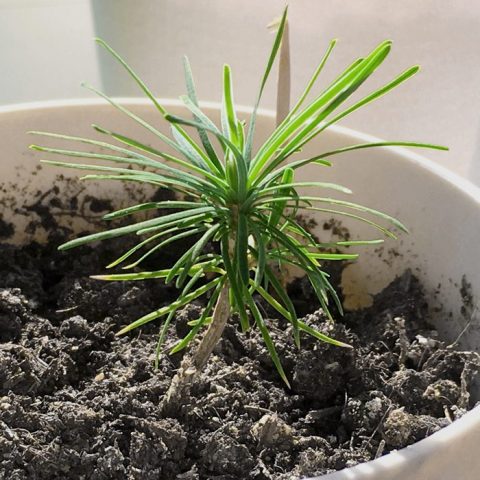

Important! Trees that have reached the age of two are planted in a permanent place.
Possible growing problems
If a tree grows in the wrong conditions or is not properly cared for, insects attack it. Failure to comply with the rules of agricultural technology leads to diseases of the larch!
It is very important to loosen the soil near the plant, otherwise air exchange will be disrupted. If the winter in the region is cold and snowless, be sure to cover the larch with agrospan.
Having found damage on the trunk, one percent copper sulfate should be applied, after which - garden var. Infectious diseases that overtake larch are caused by a fungus.
To protect a tree crop from rust and step cancer, it must be properly cared for. Moreover, it is initially required to purchase high-quality planting material. Dried branches should be removed in time.
For the prevention of diseases, it is also recommended to treat the plant with a product containing copper (one percent Bordeaux mixture can be used). The most common pest is the larch fly. If she attacks, the kidneys turn red and cannot open.
The pine hermes insect leaves a light bloom on whorls. To cure a tree, you need to carefully cut off the affected branches and apply garden var. In the future, it is required to loosen the soil more often in the trunk circle.
Common pests of larch
As with all plants, there are pests on this breed that can harm the plants.
Larch hermes is a sucking insect that spawns larvae that feed on plant juices. This insect is very small, but adults are able to fly from one tree to another.
Larch hermes
Green spruce-larch hermes is the cause of bending, drying and shedding of needles. The most dangerous thing is that after the action of this insect, the affected branches dry out the next year. The effect of Hermes is due to the appearance of growths in which the larvae develop. The activity of this parasite causes a loss of decorativeness, as well as the death of young shoots.
The bud weevil is a beetle that feeds on larch buds. If we allow the widespread distribution of this parasite, then the fruiting of the tree can decrease several times.
Kidney gall midge lives and feeds on plant tissues, the affected shoots begin to suffer from infection and soon die off. Various fungi on the bark of a tree can cause the spread of putrefactive formations and pests.
The appearance of lichens on a plant leads to the formation of a wet area on the tree, where pests will willingly parasitize.
Comprehensive protection, adherence to planting rules and early pest prevention measures will help protect trees from parasites and diseases.
Use in the national economy


Larch is widely used in everyday life. Its wood is highly durable, resinous and resilient. In terms of hardness, it is far ahead of other tree species, second only to oak. A big plus of larch is that it is very resistant to decay. By the way, all of Venice stands on wooden stilts made of Siberian larch. Surprisingly, being in water for centuries, it not only did not rot, but became harder than iron. Now even an ax will not take such a pile.
All these characteristics determine the widespread use of the species in construction, as well as in furniture business. Berths, ships, bridges, and underwater structures are built from larch. It is used in the design of interior and exterior interiors, as well as in industry - they produce turpentine. Containers for liquids are made from wood - barrels, vats. Piles, masts, sleepers, mill wings - all of this is also made from larch. Very often it is used for the manufacture of sports and children's play equipment, fences, sidewalks, front gardens.
An interesting fact: the frame of the Soviet trucks ZIS-5 and UralZIS is made of larch.
European larch varieties
Since the European larch is a very beautiful, but high culture, besides it grows very quickly, the selection is aimed at creating low varieties. But all the same, the trees very quickly reach several meters. For a small garden, or where a tall plant is simply not needed, since it shades a large area, varieties grafted on a stem are bred.
European larch Puli
The Hungarian variety Larix decidua Puli owes its origin to Jose Mikolos, who selected and planted in the mid-90s of the last century a seedling found with strongly drooping branches.
The crown is weeping in shape, forms a dense curtain of thin branches covered with light green needles, which change color to golden in autumn. At first, the shoots fall beautifully from the height of the trunk, then they spread along the ground.
If the plant is left alone, it will first form a kind of skirt around the trunk, then spread in different directions like a ground cover. Pruning started at an early age and the direction of the shoots in the right direction will help create a real masterpiece. You can even prevent the branches from lying on the ground if you constantly shorten them.
There is no need to talk about the height of the Bullet larch on the trunk - it depends on the grafting and the stock. And the branches will cover the area that landscape designers and owners will provide at their disposal. The annual growth is more than 30 cm, in any case, by the age of 10, the crown diameter will exceed 4 m, if the branches are not shortened.
Frost resistance - zone 5.
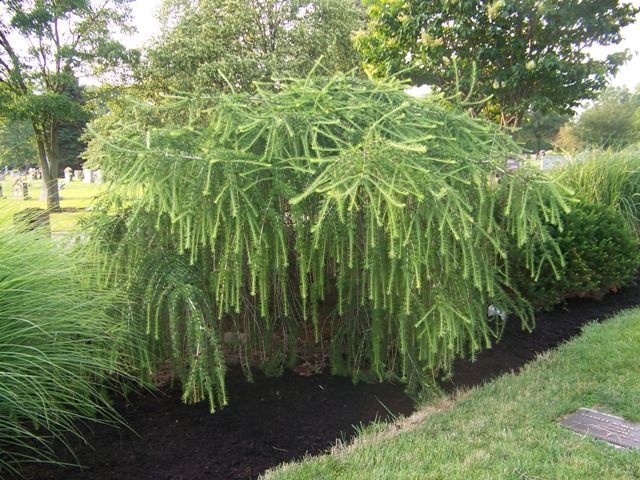

Little Bogle Larch
The Australian cultivar Larix decidua Little Bogle is derived from a witch's broom found in 1990.
This is one of the rare cultivars that gives a clear leader. Therefore, the Little Bogle larch variety is usually grafted low on the trunk, and it forms a kind of curved trunk, reaching a height of 130 cm by 10 years.It grows slowly, adding 10-12.5 cm every season.
The shoots of the larch of the European variety Little Bogle are often twisted, forming a wide asymmetrical crown, vaguely resembling an oval or egg.


European larch Kreichi
One of the most original conifers is Larix Decidua Krejci. The variety arose from a deformed seedling discovered in 1984 by the Czech Ladislav Kreichi. It is very difficult to propagate it, as well as to bring it to a permanent place, so the plant remains rare and expensive.
The European larch variety Krejci is a slow-growing tree with sparse twisted shoots growing in unexpected directions. Every year they become thicker, adding 8-10 cm in length. At 10 years old, the plant does not exceed a height of 1 m.
Even a photo of European Kreichi larch makes an indelible impression.
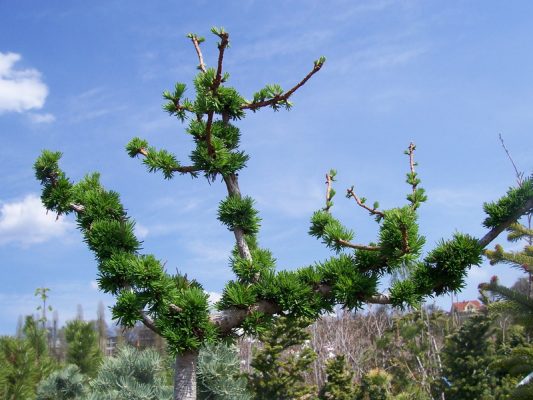

European larch Repens
The English variety Larix Decidua Repens has been known for 200 years, and it is always popular. It is grafted on a trunk, the height of which depends on the size of the tree.
In the photo of European Repens larch, you can see trees that are unlike each other, nevertheless, they are one and the same variety. The shape of the crown depends on where this or that branch "went" - first they rise 50 cm, then fall.
Carrying out annual pruning, and removing branches sticking out "in the wrong" direction, a ball or dome can be formed from larch, with shoots not touching the ground. If it is grafted on a low trunk, you will get a ground cover plant, in the center of which there will be a green "fountain" with a height of just over 50 cm.
Comment! The shape of the crown of the Repens variety depends on the imagination of the owners or the gardener.
The tree grows relatively slowly, adding about 30 cm annually. The needles are light green in spring, golden brown in autumn. Frost resistance - zone 4.
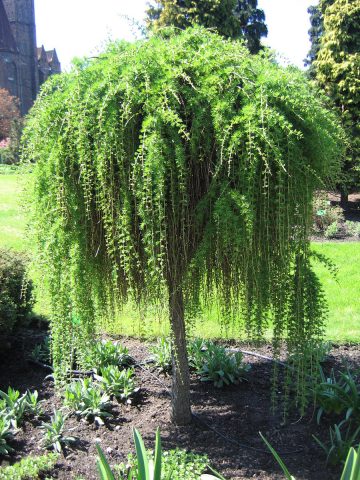

Larch Kornik
The dwarf variety Larix decidua Kornik clearly emerged from a witch's broom. It grows grafted onto a stem, the length of which depends on the size of the plant. The standard height is 1-1.5 m.
Comment! It is not recommended to make a stem higher than 2 m - the tree will be unstable.
It is a neat ball with dense short branches directed upwards, and emerald foliage, which turns golden in autumn. Although the needles fall off in winter, the Kornik larch grafted on a trunk does not lose its decorative effect.
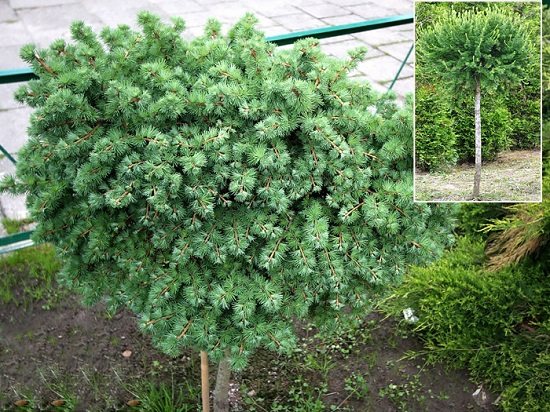

Helpful hints and tips
If you want to plant a chic European larch on your site, it is worth listening to some tips and tricks from experienced gardeners:
- if we are talking about a tree of the "Kornik" type, then a bole higher than 2 m is not recommended, since this can reduce the stability of the larch;
- when placing European larch on the lawn, it is important to remember that in the fall the latter will definitely be sprinkled with fallen needles, which can only be removed with a special garden vacuum cleaner;
- when planting larch, it must be borne in mind that its root collar should be located flush with the soil surface or slightly higher;
- with the onset of spring, all broken, dried up or unhealthy branches must be removed, regardless of the age of the coniferous tree;
- it is important to properly fertilize European larch, top dressing must necessarily be specialized, intended specifically for conifers;
- it is necessary to plant this tree with the utmost care, it is important not to harm the green pet, otherwise it may die.
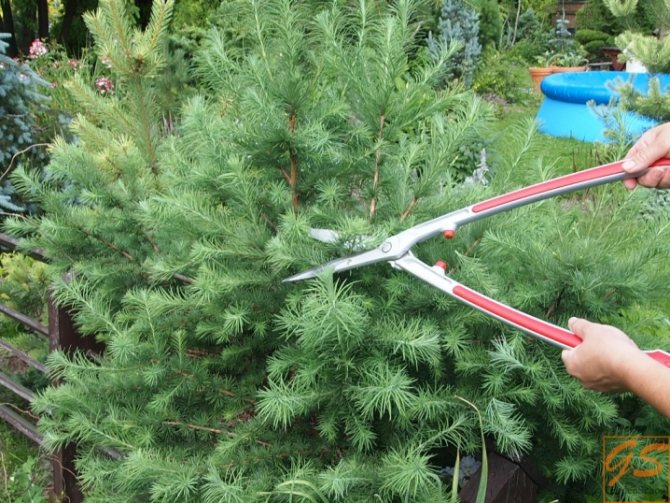

For information on what types of European larch are, see the next video.
Decorative pruning of larch
Prepare your tool before proceeding with pruning. Thin small branches are cut with pruning shears. Thick - cut with a saw. The cutting edges of the tool are wiped with alcohol before and after work. This is necessary in order not to transfer phytopathogens from one tree to another. A shaping haircut is necessary to give the crown some shape.
Important! The resin of coniferous plants is not washed well. Therefore, be sure to wear work clothes and use gloves when trimming.
In most cases, gardeners keep their plants in their natural shape: cone-shaped, spherical, etc. To do this, it is enough to cut off the branches that are knocked out of this shape at the end of winter. Larch trees are cone-shaped, which means that they can be shaped like a pyramid with tiers, gaps between parts free of branches, etc.
Step by step instructions for molding:
- Examine the tree and imagine the shape you would like to create.
- Remove dry or damaged branches, if any.
- Cut off the shoots that rub against each other. If the integrity of the bark is violated, then phytopathogens can penetrate inside.
- Use duct tape to mark the outlines, securing the tape at the top and working from top to bottom. It is as if you were sketching the outlines of the shape.
- Now cut off everything that you have outlined with a pruner.
- Remove the tape.
- Be sure to water the tree with a growth stimulant. This is to help him overcome the stress of the haircut.
- Do not cut more than 1/3 of the green mass, otherwise the plant may die.
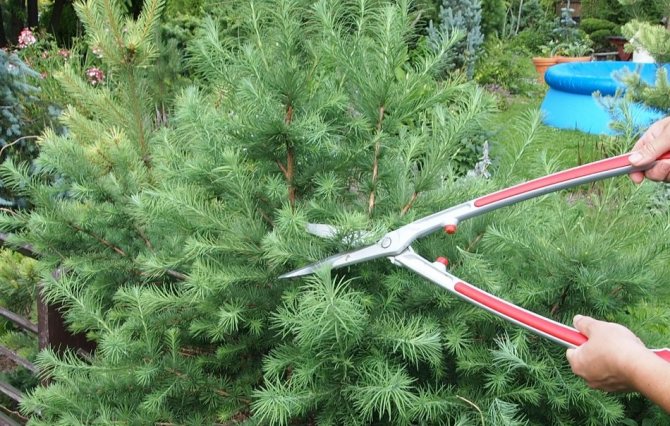

Larch is great for decorating the background of the site. Especially if you buy its decorative varieties, not too high. Such forms can be used to decorate alleys, create flower beds, decorate the entrances to a building or courtyard.
Garden Tips
Immunity to many diseases and survivability in low temperatures make it desirable for many gardeners and landscape designers.
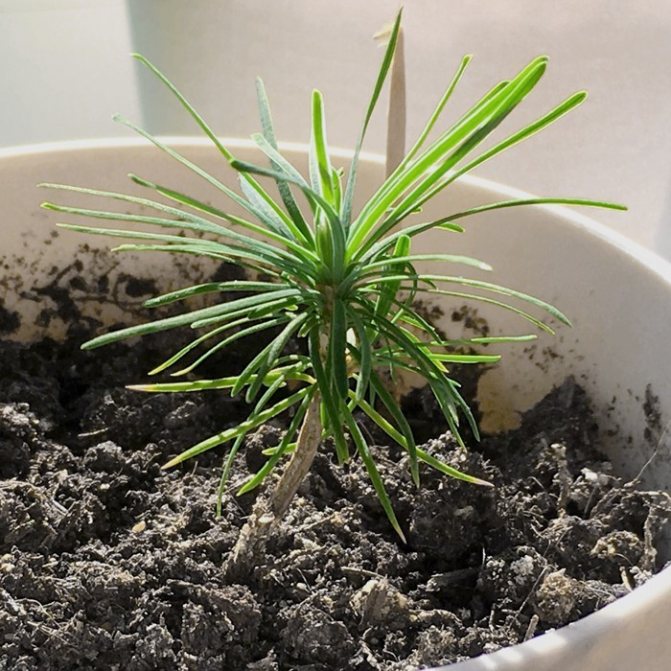

Despite the unpretentiousness, for success in cultivation, it will be useful to enrich the soil with sand, if it is initially clay or loamy. She treats well the neighborhood with conifers. The main thing is to observe the distance required for growth.
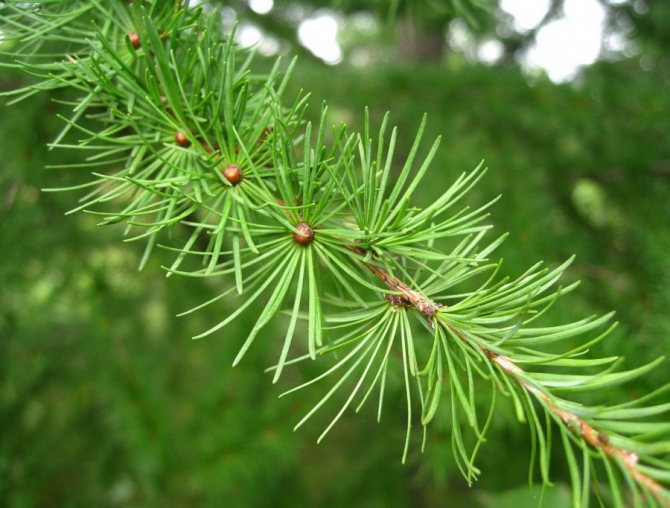

After planting and within 5-7 years, it is similar in shape to a cone, then it grows more spreading. Weeping varieties are especially popular. They look harmonious both singly and in combination.


Visually, compositions with flowers will look better, or standing alone on a uniform surface - a lawn or a pebble area. Combination with a water surface of a pond or a small fountain will be a win-win.
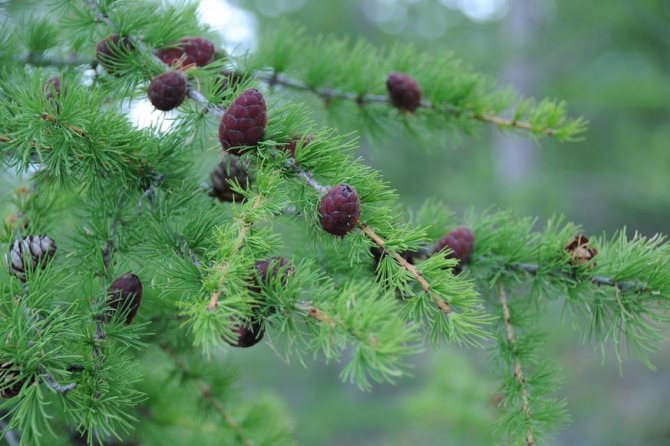

In addition, a type has been selected from which it is possible to build a hedge, but you need to understand that it will require a lot of work - constant pruning.


The industrial use of this wood is ensured with its unique ability to cure in a humid environment.
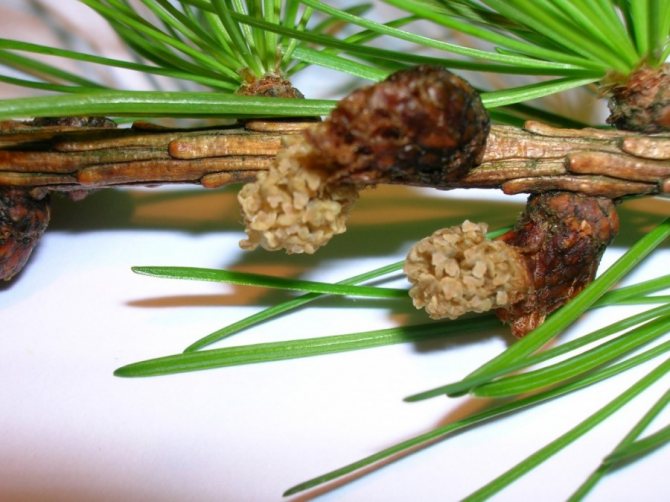

The cities built on water - Venice and St. Petersburg, used these logs as piles for all buildings. Often, attempts to pull the nail out of the board ended with the metal breaking.
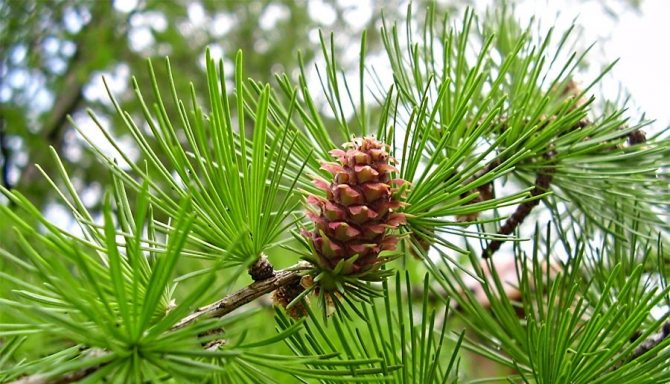

Due to this perception of moisture, rooms with high humidity are trimmed with it - baths, bathrooms, verandas, balconies. Note that the lumber is treated with a special solution, which significantly prolongs their already long service life.
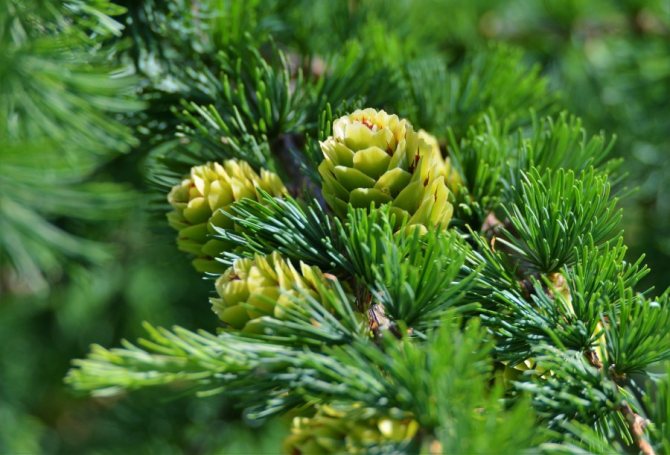

The property of becoming harder could not go unnoticed during the construction of bridges, berths, shipbuilding, and the manufacture of containers for liquids.
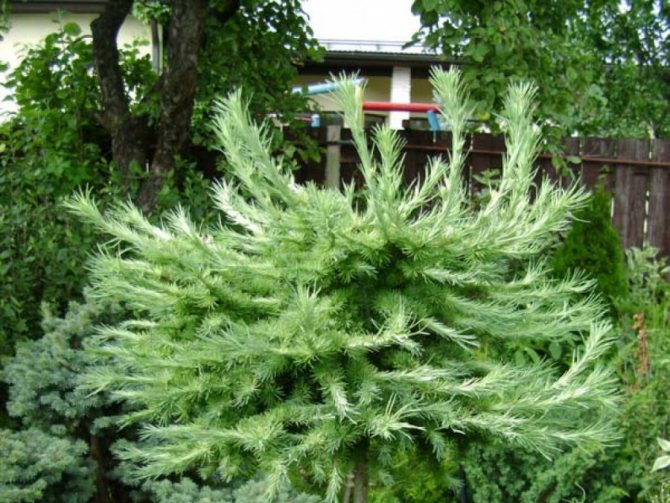

Care
The soil near the plantings must be kept clean by pulling out weeds. It is required to loosen the soil around the plants to a depth of 7–10 cm. Young seedlings need a lot of moisture, so watering should be frequent and abundant, once a week, 20 liters of water for each trunk. Trees older than 5 years get by with natural rainfall.
Fertilize plantings twice a season. For this purpose, complex mineral compositions, potassium additives, liquid organic solutions, humus, peat are used.
For the winter, larch trees are not insulated. In severe frosts, young shoots can be covered with snow so that the root system does not suffer. Mature trees do not suffer from cold weather.
Crowns are cut for sanitary purposes in the spring, after the snow melts. The emerging haircut is carried out in June. During the season, you can cut up to ⅓ of the length of the shoots, during the growing season they quickly recover.


Weeping Larch Pendula
It has thin branches, randomly located on the trunk and effectively hanging down to the soil. The tree can reach 30 m in height. Due to its decorative appearance, Pendula larch is often used to decorate areas where it forms coniferous cascades. Loves light and is resistant to low temperatures.
Application in landscape design
Pendula larch was discovered in 1836. Since that time, European gardeners have begun to actively use it due to its decorative appearance. She is good in both single and group plantings. When growing trees obtained by grafting, their height does not exceed 1.5 m on a trunk. It is often used for landscaping personal plots and areas near institutions, creating spectacular compositions, including rockeries and alpine hills.
Diseases and pests
The main pests of larch are silkworms, which feed on buds, soft leaves and young cones. Other insects that can harm the culture should be distinguished:
- larch sawyer;
- larch leaf roll;
- larch sheath;
- larch fly;
- pine cone;
- larch moth.
At the first signs of damage, larch is treated with an appropriate insecticide.
The main disease of the culture is considered to be rust, the intermediate host of which is birch, rarely alder. Larch can be affected by cancer and shute. Treatment consists of fungicide treatment.
In order to reduce the likelihood of diseases and pests, it is necessary to regularly carry out preventive treatments and inspect larch.
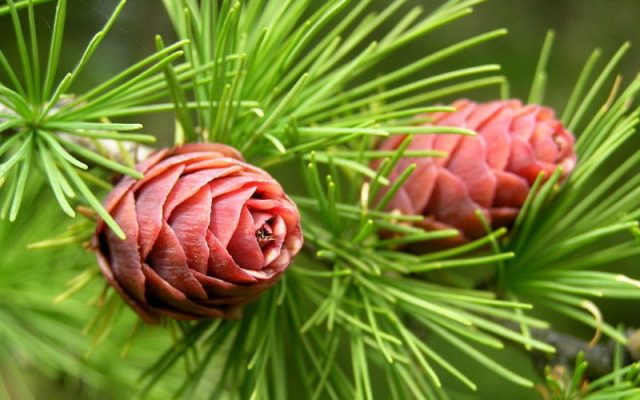

European larch on a trunk
A significant part of modern varieties are plants grafted on a trunk. This allows you to limit the height of European larch, but does not always slow down the growth of shoots. As a result, you can get a tree of the desired size, and the shape of the crown will depend on the scion. Vaccinations can be conditionally divided into three types:
- The easiest option is to inoculate the shoots of species larch on a bole. The plant is limited in height, and even so drooping branches lie on the ground and spread like a ground cover.
- Breeders are looking for shoots of a strange shape, with original color of needles or other interesting deviations from specific characteristics. Then they are propagated by grafting and observed. If clones pass on modified forms from generation to generation, a new variety emerges.
- Many interesting cultivars arise from witch brooms. A new variety of European larch will not necessarily have a weeping crown. It can resemble a hedgehog, consist of several bizarrely curved branches or other original shape.
Grafted European larch trees are expensive, but have a unique crown. It is impossible to find two identical ones, and if you start pruning at an early age, then the shape of the tree can be corrected or directed in the desired direction.
A very interesting option for creating an arch from a seemingly well-known variety of European larch Pendula is presented in the photo.
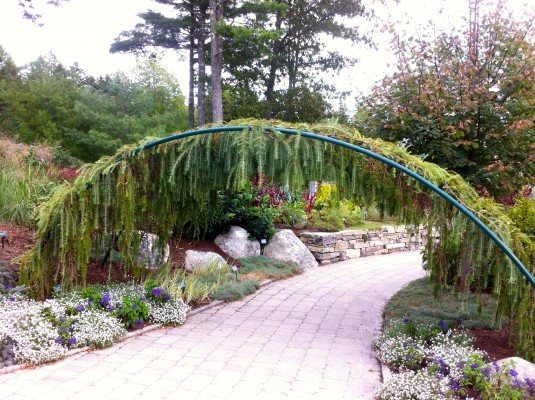

Geography of distribution
It appeared during ecological speciation, through the development of new growing areas. In Russia, it is found everywhere, especially in the northern regions.
The main area covers:
- woodlands located in the European part (mainly in the east and north-east);
- the territory of the Urals, prevailing in the Northern, Subpolar and Polar mountain regions;
- western-eastern Siberia;
- tundra regions, up to the Altai Mountains and the Sayan Mountains.
In other areas, it coexists with other species, forming light forests. Much less common in the central regions and the middle lane.
Under natural conditions, it is located in mixed groups with cedar, spruce, fir and common pine.
In mountain ranges, it occurs at an altitude of 2.2-2.4 thousand km above sea level. Due to its increased resistance to frost, it grows even beyond the Arctic Circle.
Deciduous forests in Russia occupy about 40% of the area.
Also found in Mongolia, western China and eastern Kazakhstan. It has a conservation status and is listed in the Red Book in some Russian regions.
Brief information about the variety
- Crown color: green with a bluish tint.
- Height: up to 40 m.
- Barrel diameter: up to 1.8 m.
- Distribution area: covers all of Russia, mainly the northern regions, incl. Siberia and the Urals.
- Crown of young conifers: pyramidal, rounded with age.
- Landing features: prefers well-lit places, does not tolerate waterlogged soil.
- Immunity: resistance to the main diseases of conifers is observed, resistant to pest infestation.
- average life expectancy: 400-500 years. In the conditions of growth of the natural environment, the age of individual specimens can reach 8-9 centuries.
Testimonials
Siberian larch is in great demand among gardeners.
The tree grows on any type of soil, is not afraid of frost, gas pollution and, with good care, is not damaged by diseases - an excellent option for both beginners and those who do not have a lot of time for close attention.
The culture is excellently propagated by seeds, which, after transplanting to the site, give strong seedlings with all varietal characteristics.
In addition, she safely transfers the neighborhood of various perennials, which makes it possible to use this culture in unusual garden compositions.

